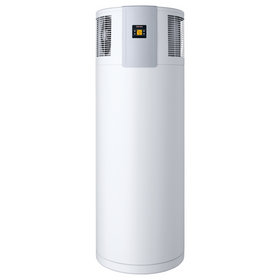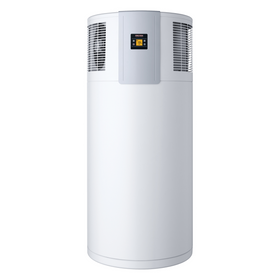
What Vancouver's Sustainability Goals Mean for Homeowners
Last Updated: Mar 17, 2025The city of Vancouver has audaciously declared the goal of leading the world in green building design and construction. More specifically, by the year 2020, the city aims to require all new buildings to be carbon neutral in operations, and they hope to reduce energy use and greenhouse gas emissions in existing buildings by 20% over 2007 levels in that same timeframe.
Since 2007, the progress that Vancouver has made in implementing green building techniques and methods has effectively decreased the kilograms of CO2 per square meter of new buildings from 21 kg to 11.8 kg. At the same time, these initiatives—especially the building retrofit strategy—will account for savings for Vancouver residents to the tune of $90 million and 160,000 tons of greenhouse gasses, per year, by 2020.
While these sustainability goals are certainly impressive and represent an exciting example of how city planners can implement policies to stimulate the construction of greener, healthier, and more ecologically friendly homes, these policies also represent changes and adjustments that Vancouver residents need to be aware of.
Rise recently talked with Chris Higgins, a Green Building Planner for the city of Vancouver, to better understand what Vancouver’s goals mean for homeowners. As buildings account for a large percentage of greenhouse gas emissions (40%, by some measures), the strategy must be two-pronged: addressing newly constructed homes as well as existing housing stock. He explains some of the challenges, opportunities, and struggles associated with helping the homeowners of Vancouver move towards a carbon zero future.
Think about this: invest 2-7% more into your new home today, and see savings of 20-25% over the cost of building according to standard building codes. What’s that translate to in real numbers? That’s as low as $8,000 on a $400,000 home - that would mean thousands in savings each year.
Table of Contents
- Carbon Zero Homes in Vancouver
- Vancouver's Building Codes
- What is the Vancouver Building Bylaw 10908?
- Important Sustainability Lessons from Vancouver's Building Bylaw
- The Challenges to Retrofit Existing Homes in Vancouver
- Sustainable Home Professionals in Vancouver
- Lanefab Design/Build
- Clay Construction
- Naikoon
- Cast Sustainable Construction
- Ritchie Construction
- Marken Design and Consult

Vancouver's Building Codes
Building codes across the country are not generally considered to be friendly towards sustainable building practices. In the worst of cases, homeowner associations (HOA) will sometimes actively prohibit the installation of solar panels on roofs due to supposed aesthetic concerns. While many state laws, such as the recently passed Florida Solar Law, have begun to expressly prohibit these absurd vetoes against solar panels, city and state building codes across the country still regularly raise hindrances to homeowners and contractors who want to implement the highest standards of sustainability into the design and construction of homes.
From minimum square footage requirements that essentially prohibit homeowners from opting for tiny, more energy-efficient homes, to codes that prohibit gray water recycling or rainwater catchment systems, building codes often hinder rather than encourage sustainable building practices.
The city of Vancouver, however, is a leader in showing how building codes can be adapted and designed to actively promote sustainability goals. Recently, the city released its Greenest City 2020 Action Plan, which sets forth an ambitious and motivating plan of action to make Vancouver a vanguard city in terms of limiting carbon emissions while creating a healthy, sustainable city for its residents.
One of their lofty goals is to transform the homes of the Vancouver area into carbon-neutral buildings that produce as much as renewable energy as they use and thus reduce greenhouse gas emissions by 20% over 2007 levels. To achieve this goal, creating a progressive city-wide building code was one of the core components.
What is the Vancouver Building Bylaw 10908?
In most of Canada, building codes and bylaws are established by the provincial government. However, the Vancouver Charter allowed the city government to create its own building standards that fit with their sustainability goals. The ability of the city government to adopt its own set of building bylaws is unique in that it allows the city to define its own sustainability agenda, determine the standards to which new buildings most conform, create retrofit policies for older homes, and also regulate the administrative procedures for permitting, inspections, and the enforcement of the specific requirements related to the sustainability goals related to buildings.
While the Vancouver building bylaw covers a wide assortment of regulations, including safety and accessibility issues, it also governs issues related to energy usage, which is essential for helping the city reduce its reliance on fossil fuel sources of energy and thus reduce the carbon footprint associated with residential homes.
Another advantage of having a municipal building code is that the city can regularly create updates to the code that follows from collected data and technological improvements. Earlier this year, the city of Vancouver updated the code to include several requirements, including:
- Updated energy requirements
- Required solar shades for Passive House projects
- Increased insulation requirements to improve the thermal performance of the home
- Limits to exterior lighting to reduce energy expenditures
- More efficient plumbing fixtures
- Regulations of landscape irrigation to reduce water waste
Important Sustainability Lessons from Vancouver's Building Bylaw
Rise took a look at Vancouver's building bylaw and sustainability goals; below, we highlight a few of the most important aspects.
Relaxed Limits for Passive Houses
The city of Vancouver understands that passive house design can radically improve the energy efficiency of a house and subsequently cut back on greenhouse gas emissions. However, the standards for building passive houses often challenge traditional building codes and regulations due to the extra space needed for insulation. The Vancouver Building Bylaw relaxed the limits on minimum ceiling height and size of backyards to allow for the thicker walls and ceilings needed to get the extra amount of insulation that passive houses require. For homeowners who opt to build a passive house, they also receive a 5% boost that accompanies other rebate-based programs to encourage sustainable building practices.
Multiple Family Dwellings
The city of Vancouver also has progressive code standards for multiple-family dwellings. For example, if a landlord rents out a building with more than 5 units, an energy advisor will perform a reduced-priced energy audit and let the owner know the types of incentives and rebates that are available. They will also automatically retrofit the washers, lighting, and showerheads to be more energy and water efficient, as well as offer quotes to upgrade the heating and cooling systems. This program can help landlords identify the most cost-effective upgrades. The City also has stricter energy requirements for large residential buildings and is currently negotiating with the province to gain the ability to do their own energy benchmarking.
Achieving Zero Waste
Another essential aspect of the “Greenest City 2020 Action Plan” is focused on achieving zero waste. The city of Vancouver offers a progressive curbside pickup program for organic waste produced by single-family homes. Chris Higgins, who works with the city of Vancouver as a Green Building Planner, explains that “residents can put all their organic trash in green bins every week, while regular trash service is every 2 weeks. By offering more frequent green pickup then regular trash service, it encourages people to use the green waste bin more and produce inorganic trash less.” Chris goes on to explain that the city charges its citizens for regular trash service based on the size of bins they use. The smallest bin is $90 a year while the largest is considerably more expensive. “There is an incentive through the pricing structure to produce less waste,” Chris explains, “but recycling is free and citizens don’t pay for that service.”
Minimum Square Footage
The city of Vancouver has a progressive building code standard for the minimum square footage of homes. While Chris Higgins recognizes that land prices drive the development footprint, the city still has a minimum square footage requirement of just 320 square feet, which is well below the standard tiny home size. While housing developers will generally try to build to the maximum that is allowed to maximize their profit, Chris believes that the city also “grants people the freedom to build the home they desire.” This certainly opens the door for tiny home communities to flourish in the Vancouver area where the average home cost is well over $300,000.

The Challenges to Retrofit Existing Homes in Vancouver
Unlike codes and regulations for new homes, implementing retrofit strategies that lead towards higher energy efficiency standards for existing buildings is a bit trickier. “With existing buildings, it's a bit more difficult,” Chris admits. For example, “homeowners can switch from oil or natural gas to an electric heat pump to heat their homes, and there is a dollar value increase program to help people with that transition.” However, it can be a challenge to get existing homeowners to upgrade their heating systems to more sustainable and energy-efficient models—most people only address these issues when there is a crisis caused by a mechanical failure. “If a furnace goes out in the fall time,” Chris details, “it's not a great time to start talking about putting in an electric heat pump, because people just want to get heat into their home.”
In terms of regulation, “it has all been very voluntary up till now,” Chris admits. “However, we could in the future have stricter regulations on replacing existing mechanics like hot water heaters or furnaces.” For example, Chris imagines future regulation that could require replacement mechanics to follow rigorous energy factors, which are metrics used to compare the energy conversion efficiency of residential appliances and equipment. Since the ideal 1:1 energy factor can only be obtained through electricity (and not with fossil fuels), this policy or code would influence homeowners to make energy-efficient upgrades that would save them money in the long run while also cutting back on the carbon footprint of their home.
Chris wants homeowners across the city to know how easy it is to convert from fossil-fuel based heating systems to a heat pump. “The common citizen just wants to adjust the thermostat in order to heat up their home…and it doesn’t matter to them where that heat comes from. If they knew how easy and cost-effective it is to make the conversion to heat pumps, for example, it would make for an easier transition,” he explains.
The City of Vancouver's Green Building webpage also admits that “we’ll continue to use a combination of incentives and regulations to meet our green building targets.” One of those proposed regulations is to “update the retrofit requirement options in Vancouver’s Building By‐Law to further reduce energy use and greenhouse gas emissions.”
Tobias Roberts
Tobias runs an agroecology farm and a natural building collective in the mountains of El Salvador. He specializes in earthen construction methods and uses permaculture design methods to integrate structures into the sustainability of the landscape.












